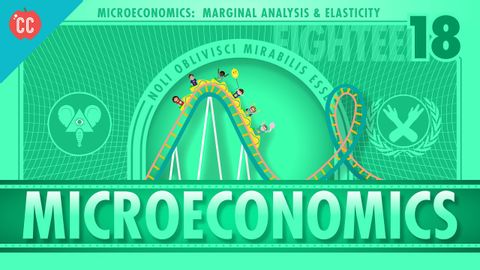限界分析、ジェットコースター、弾性、ゴッホ:クラッシュ・コース・エコン#18 (Marginal Analysis, Roller Coasters, Elasticity, and Van Gogh: Crash Course Econ #18)
Jane が 2021 年 01 月 14 日 に投稿  この条件に一致する単語はありません
この条件に一致する単語はありません- n. (c./u.)(同じ文化を共有する)民族;人々;人々;親族;社員
- v.t.居住する
- n. pl.人々
US /ɪˈvɛntʃuəli/
・
UK /ɪˈventʃuəli/
- adv.非常によく : すばらしく
- adj.大きい;重要な;すばらしい;素晴らしい;上手な;大
- n. (c.)偉大な : 卓越した
- v.t.着替える;両替する;取り替える;変える : 変わる;乗り換える
- n. (c./u.)着替えの服一式;小銭;おつり;変化 : 変更
エネルギーを使用
すべての単語を解除
発音・解説・フィルター機能を解除

